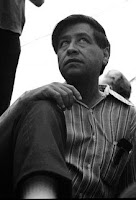
23 September 2009
By Saul LandauIn Miami, several retired U.S. officials remembered the early 1960s, when the CIA sent hundreds of employees to join other government bureaucrats to process and recruit thousands of Cuban exiles to destroy the Cuban revolution. Assassination plans abounded, from poisoned cigars and wetsuits for Fidel Castro, to a sniper rifle smuggled in by his comrade to a sophisticated poison pill. The capsule’s designer imagined the pills dissolving in Fidel’s chocolate milkshake, which he drank regularly at the former Havana Hilton Hotel’s ice cream bar. These Hollywoodesque creations came from the CIA laboratory of Dr. Sidney Gottlieb, the Agency’s ghoulish technology maven. Most of the plotters and erstwhile assassins of that era, like Gottlieb, have died.
One long-retired Air Force officer told me of his plan to undermine Fidel among Cuba’s guajiros (peasants). Given the shortages of consumer goods, it made sense to clandestinely drop tens of thousands of rolls of toilet paper on the island. On each leaf the guajiro would see a photo of Castro and Khrushchev together. “That would have given the guajiros a good laugh,” the perpetrator told me. “But the White House nixed it.” Perhaps Kennedy might have thought that if he approved such a prank, some joker in the U.S. could put the President’s and Bobby’s faces on toilet paper and sell the product throughout the United States; legal under the First Amendment.
Most Cubans who arrived in the days preceding what became the April 1961 Bay of Pigs “fiasco” assumed the U.S. government would deal with Fidel and his communists. Washington had never allowed such flagrant disobedience to go unpunished. By the summer of 1960, the Cuban revolution had the gall to seize property belonging to the mighty oil companies (the Cuban government nationalized Texaco and Esso after they refused to refine Soviet crude oil on orders from Washington). Such defiant behavior challenged the essence of the Monroe Doctrine: “Latin America is ours.”
Few inside the hub of operations questioned the premises. “It was the height of the Cold War, after all,” several retired officials explained as if this statement summarized the justification for everything. The West faced a relentless enemy of great power and U.S. agencies had to stop its expansion. Indeed, most of the world would have agreed, at least, that Cuba informally belonged to the United States, no matter what most Cubans thought of that assessment.
The secret plots to overthrow the revolutionary government had become the world’s most open secret. Miami became Planning and Operations Center for the CIA’s largest station (JMWAVE). One man, now in his late 50s, told me how a CIA official -- a Mr. Bishop -- had recruited his father in 1959. Their family moved to Miami along with hundreds of thousands of Cuba’s rich, professional and propertied middle classes. His father worked from a two story building in Miami Beach, one of hundreds of CIA properties in the area. Nearby, ships from the CIA’s navy would dock, load up with provisions (arms and bombs) and set off to the Cuban coast to wreak havoc or just drop or pick-up agents whose job was to subvert the new government. “It was routine, every day and sometimes twice a day.”
“I thought the invasion would come in October of 1960,” he told me, “or at least that would be the start of some intense guerrilla war. Everyone speculated if a full-scale invasion would occur or if men would be sent to the Cuban mountains to do what Fidel did to Batista.”
Eisenhower had obvious misgivings about the plan and passed the ball to Kennedy, who then suffered the ignominious defeat. Publicly, he accepted responsibility (“Victory has a thousand fathers; defeat is an orphan.”). Privately, however, he sought revenge: the overthrow of the Castro government. His brother, Attorney General Robert Kennedy, directed a war of terror against Cuba; assassination attempts and sabotage, propaganda and economic war against an island of 6 million people.
In December 1960, I was on a tour with a group of students going to Cuba. Arriving at the Miami airport, we learned the pilots of our Cubana plane (each hour Pan Am and Cubana flew to Havana) had defected. While waiting for a new crew to fly over from Havana, a “spontaneous demonstration” erupted. Angry Cuban exiles screamed at the college students; some protestors threw punches and began to spit at the students. One asked a demonstrator: If Cuba is so terrible, you should want us to go. Then we’ll return and tell lots of people how awful things are.” The protestor looked puzzled. He turned to the team leader and asked for instructions. “Don’t talk, just spit,” he sneered. It appropriately summed up U.S. policy for fifty years.
Saul Landau is an Institute for Policy Studies fellow and filmmaker (DVDs available through
roundworldproductions.com)
-30-









